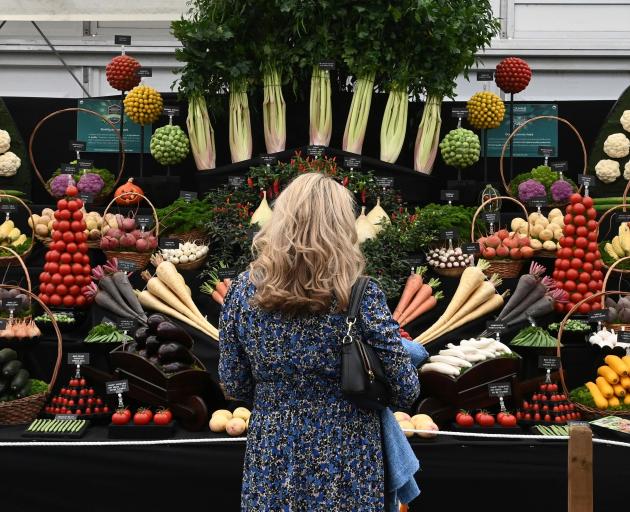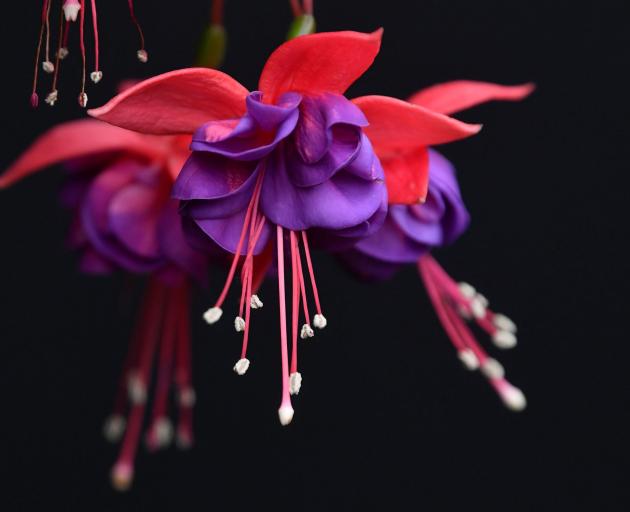
I’ve said it before and I’ll say it again: Chelsea Flower Show is my favourite time of year.
To someone who loves both plants and design, it’s like Christmas and my birthday rolled into one.
Except in 2021, for the first time in more than a century, the Chelsea "time of year" is at the close of the English summer, rather than the start.

It was forced to cancel last year for the first time since World War 2.
Sure, this dramatic seasonal shift has meant challenges.
For starters, all the classic "Chelsea" plants had to be abandoned and that fresh, spring vigour many species have at the peak of the English growing season will be a distant memory.
But to my mind that is a good — perhaps even desperately needed — thing.

It might lean more heavily to alliums some years and foxgloves the next, but seasonal limitations in the UK inevitably mean a similar paint box is deployed.
By moving the show to the opposite end of the season, designers have been forced to deviate from familiar favourites and explore all sorts of options they never normally get to.
Visitors benefit, too, because, frankly, in the riotous growth of spring, every garden looks amazing.
Trying to keep colour, vibrancy and lushness going as the UK slides into autumn, when few species look their best, is far more difficult.
So there will be much more to learn from the design choices on offer.

I love attending flower shows and checking out the new plant varieties, learning from the growers, and even the scent of bark chips on the pathways.
But perhaps what I love the most is the eavesdropping: learning what visitors really think about the exhibits. There is one frequent comment, however, that always makes me feel slightly uneasy: "Why doesn’t my garden look like this?"
This is almost always said, not with a note of humour, but of disappointment. If you have ever found yourself thinking this, let me fill you in to what happens behind the scenes.
One of the most fun things about working in garden design, whether that’s a huge exhibit on Chelsea’s Main Avenue or the tiny terrariums posted on Instagram, is pulling off an illusion.
Fundamentally, that’s what all gardens are: attempts to engineer highly stylised visions of what we think nature should look like, rather than what it actually is.
All the bits we tend to like (abundant flowers, crystal-clear water, shaded resting spots) are heightened, and all the bits we don’t like (mud, mess, pests, sick or unhealthy plants), are airbrushed out.
Working on show gardens is, to me, such fun because what we are doing is taking that to the next level — showing not an accurate view of what gardens look like in reality, but an absolute fantasy of how we might like the world to be — it is the horticultural equivalent of a glossy music video or fashion magazine cover.
It seems not all visitors realise these are more akin to the magic of movie sets than the reality of actual gardens.

And that’s before the hundreds of thousands of pounds of budget and dozens of super-talented people working day and night for months to pull off the illusion.
The very nature of shows and media is that it is all about the outcome — a perfect snapshot in time — whereas, in reality, all gardens are constantly evolving works of art.
They are never finished and most certainly never perfect.
To me, the real joy of gardening is in the process — the excitement as new seeds burst into life or the sense of achievement when a shrub flowers for the first time.
My indoor garden at home is only a pale imitation of the vision I post of it online, but it brings me happiness every day.
So as you catch up with the visual splendour from this year’s Chelsea show, be sure to enjoy your garden for what it is, not what you think it should be.
— Guardian News and Media










